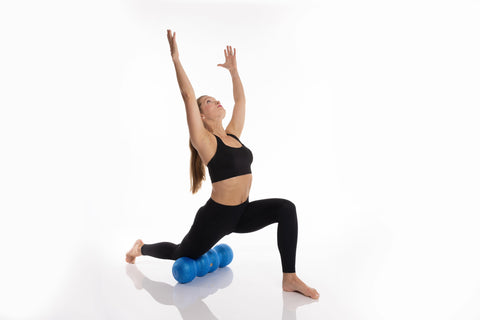
Our bodies are incredible machines, capable of amazing feats of strength, agility, and coordination. But to truly function at their best, they need proper care and maintenance. This includes not just strengthening muscles but also focusing on flexibility and maintaining a healthy range of motion (ROM). Stretching is the key to unlocking this potential, allowing us to move freely, perform better in our chosen activities, and even reduce our risk of injuries.
Understanding Range of Motion
Range of motion refers to the extent to which a joint can move in a specific direction. Each joint in your body has a natural ROM, limited by the structure of the bones and surrounding tissues like muscles, ligaments, and tendons. Having a good range of motion in your joints is crucial for everyday activities, from reaching for a cup on a high shelf to bending down to tie your shoes.
The Benefits of Stretching for Improved ROM
As we age, or if we neglect stretching, our muscles naturally shorten and tighten. This can lead to decreased ROM, making even basic movements feel stiff and uncomfortable. Stretching helps counteract this by lengthening and loosening muscles, allowing them to move through their full range of motion. Here's how stretching benefits your ROM:
- Increased Flexibility: Stretching elongates muscle fibers, making them more pliable and less prone to tightness. This allows for greater freedom of movement in your joints.
- Improved Blood Flow: Stretching increases blood flow to the muscles, delivering essential nutrients and oxygen to aid in repair and recovery. This can also help reduce muscle soreness and stiffness.
- Enhanced Joint Health: Maintaining a good ROM keeps your joints lubricated and helps prevent them from becoming stiff and painful. Stretching helps maintain the health of the cartilage that cushions your joints.
- Reduced Risk of Injury: Tight muscles are more susceptible to tears and strains. Stretching helps keep your muscles loose and prepared for movement, reducing the risk of injuries during exercise or daily activities.
- Improved Posture: Tight muscles can pull your body out of alignment, leading to poor posture. Stretching helps elongate shortened muscles, allowing you to maintain a more natural and healthy posture.
- Better Performance: Whether you're an athlete or just enjoy an active lifestyle, good ROM is essential for optimal performance. Stretching helps you move more efficiently and with greater power.
Building a Stretching Routine:
Now that you understand the importance of stretching for ROM, how do you incorporate it into your routine? Here are some tips:
- Make it a Habit: Consistency is key. Aim to stretch at least 2-3 times a week, for 10-15 minutes per session. Ideally, stretch after a light warm-up or as part of your cool-down after exercise.
- Focus on Major Muscle Groups: Don't try to stretch everything at once. Prioritize major muscle groups like your hamstrings, quads, glutes, back, and shoulders. You can find plenty of targeted stretching routines online or consult with a fitness professional.
- Listen to Your Body: Stretching should feel good, a gentle pulling sensation. Don't push yourself to the point of pain. Breathe deeply and slowly throughout your stretches.
- Hold and Release: Hold each stretch for 30-60 seconds, feeling the tension release in the targeted muscle. Repeat each stretch 2-3 times.
- Dynamic vs. Static Stretching: There are two main types of stretching: dynamic and static. Dynamic stretches involve controlled movements to prepare your muscles for activity, while static stretches involve holding a position for a sustained period. Both are beneficial, but static stretches are generally more effective for improving ROM.

Unlocking Your Full Potential with Rollga
While stretching is a powerful tool for improving ROM, the Rollga foam roller can be a valuable addition to your routine. Here's how Rollga helps:
- Targeted Release: The Rollga's unique design, with grooves and multi-density bumps, allows you to target tight spots and trigger points in your muscles more effectively than a traditional foam roller. This helps release tension and improve flexibility.
- Improved Circulation: Foam rolling increases blood flow to the muscles, which can further aid in muscle recovery and flexibility.
- Self-Myofascial Release: The Rollga helps break down adhesions in the fascia, the connective tissue that surrounds your muscles. This can further improve your ROM and range of motion.
By incorporating stretching and Rollga foam rolling into your routine, you can unlock your body's full potential. You'll move with greater ease and confidence, reduce your risk of injuries, and experience the joy of a truly healthy and mobile body. Remember, consistency is key! So, make stretching and Rollga a regular part of your life and watch your range of motion and overall well-being soar.

